Chinese President Xi Jinping (習近平) yesterday met with former president Ma Ying-jeou (馬英九) at the Great Hall of the People in Beijing, with Xi’s opening statement once more emphasizing that people on both sides of the Taiwan Strait are Chinese and that foreign intervention cannot change their inevitable unification.
Xi said that 5,000 years of history of zhonghua minzu (中華民族, ethnic Chinese group) have seen their ancestors move to Taiwan to establish new lives, while also documenting them fighting side-by-side against foreign forces and finally freeing Taiwan.
“Both sides are Chinese,” and there are no issues that cannot be worked through, he said, adding that no force can separate them.
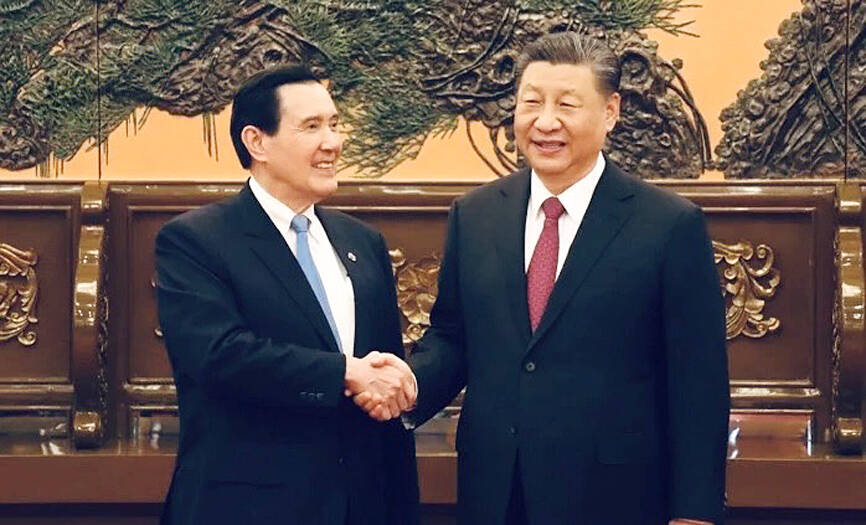
Photo: screenshot from livestream
The youth is the hope of a country and of its people, and young people on both sides of the Strait should find within them the will to be proud of their ancestry and work together to jointly create a prosperous future for zhonghua minzu, he said.
Ma said the young members of his delegation deeply appreciate the enthusiasm of their Chinese hosts, and their experiences over the past few days as their travels around China have brought them closer to their cultural roots.
They have seen China’s development firsthand and felt the bonds that tie the two sides together, he added.
The Republic of China (ROC) and zhonghua minzu had weathered a century of humiliation in the past, but joint efforts across the Taiwan Strait over the past three decades have slowly brought zhonghua minzu back to prominence, he said.
While people on both sides of the Strait live under different governing philosophies, they are both Chinese people and should help one another to revitalize zhonghua minzu, Ma said, adding that this was the ideal he and “Mr Xi” agreed on at their meeting in 2015.
Ma said he hoped both sides would cherish the values and ways of life of their respective societies.
Quoting Chinese writer Lu Xun (魯迅), he said: “Though we suffered tribulations and hardships, we remain brothers; let us greet one another with smiles, and let bygones be bygones (渡盡劫波兄弟在、相逢一笑泯恩仇)” to emphasize that war would be unbearable to zhonghua minzu as a whole.
Ma’s statement yesterday potentially puts a new spin on the so-called “1992 consensus,” as he stated that while both sides in 1992 had verbally expressed their understanding of “one China,” future generations should prioritize public welfare, adhere to the “1992 consensus” and jointly reject Taiwanese independence.
The so-called “1992 consensus,” a term former Mainland Affairs Council chairman Su Chi ( 蘇起 ) in 2006 admitted to making up in 2000, refers to a tacit understanding between the KMT and the Chinese Communist Party (CCP) that both sides of the Strait acknowledge there is “one China,” with each side having its own interpretation of what “China” means.
Ma is in China as part of what he has called a “journey of peace” to calm tensions with Beijing, which has never renounced the use of force to bring Taiwan under its control.
Additional reporting by AFP
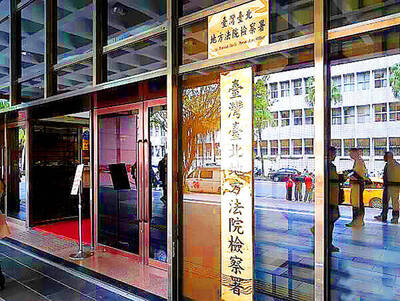
INVESTIGATION: The case is the latest instance of a DPP figure being implicated in an espionage network accused of allegedly leaking information to Chinese intelligence Democratic Progressive Party (DPP) member Ho Jen-chieh (何仁傑) was detained and held incommunicado yesterday on suspicion of spying for China during his tenure as assistant to then-minister of foreign affairs Joseph Wu (吳釗燮). The Taipei District Prosecutors’ Office said Ho was implicated during its investigation into alleged spying activities by former Presidential Office consultant Wu Shang-yu (吳尚雨). Prosecutors said there is reason to believe Ho breached the National Security Act (國家安全法) by leaking classified Ministry of Foreign Affairs information to Chinese intelligence. Following interrogation, prosecutors petitioned the Taipei District Court to detain Ho, citing concerns over potential collusion or tampering of evidence. The
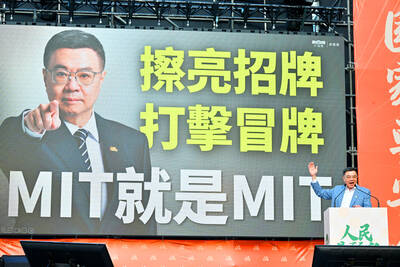
TRADE: The premier pledged safeguards on ‘Made in Taiwan’ labeling, anti-dumping measures and stricter export controls to strengthen its position in trade talks Products labeled “made in Taiwan” must be genuinely made in Taiwan, Premier Cho Jung-tai (卓榮泰) said yesterday, vowing to enforce strict safeguards against “origin laundering” and initiate anti-dumping investigations to prevent China dumping its products in Taiwan. Cho made the remarks in a discussion session with representatives from industries in Kaohsiung. In response to the US government’s recent announcement of “reciprocal” tariffs on its trading partners, President William Lai (賴清德) and Cho last week began a series of consultations with industry leaders nationwide to gather feedback and address concerns. Taiwanese and US officials held a videoconference on Friday evening to discuss the
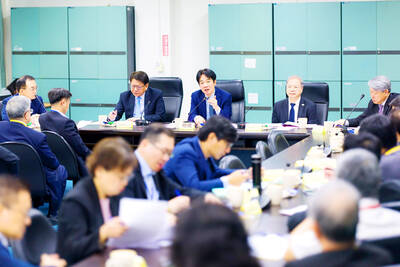
NEGOTIATIONS: The US response to the countermeasures and plans Taiwan presented has been positive, including boosting procurement and investment, the president said Taiwan is included in the first group for trade negotiations with the US, President William Lai (賴清德) said yesterday, as he seeks to shield Taiwanese exporters from a 32 percent tariff. In Washington, US Trade Representative Jamieson Greer said in an interview on Fox News on Thursday that he would speak to his Taiwanese and Israeli counterparts yesterday about tariffs after holding a long discussion with the Vietnamese earlier. US President Donald Trump on Wednesday postponed punishing levies on multiple trade partners, including Taiwan, for three months after trillions of US dollars were wiped off global markets. He has maintained a 10 percent
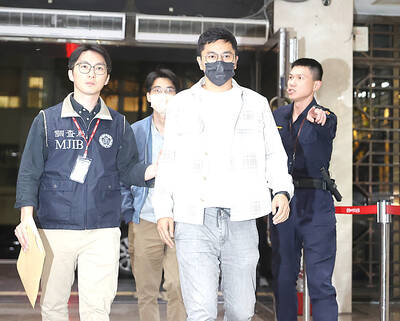
PERSONAL DATA: The implicated KMT members allegedly compiled their petitions by copying names from party lists without the consent of the people concerned Judicial authorities searched six locations yesterday and questioned six people, including one elderly Chinese Nationalist Party (KMT) member and five KMT Youth League associates, about alleged signature forgery and fraud relating to their recall efforts against two Democratic Progressive Party (DPP) legislators. After launching a probe into alleged signature forgery and related fraud in the KMT’s recall effort, prosecutors received a number of complaints, including about one petition that had 1,748 signatures of voters whose family members said they had already passed away, and also voters who said they did not approve the use of their name, Taipei Deputy Chief Prosecutor